Study on the Morphology, Microstructure, and Properties of 6082-T6 Aluminum Alloy Joints in MIG Welding
Abstract
:1. Introduction
2. Experimental Materials and Methods
2.1. Experimental Parameters
2.2. Materials
2.3. Experimental Procedure and Test Methods
3. Numerical Simulation
3.1. Basic Equations of Heat Transfer
3.2. Heat Source Model
3.3. Mesh Models
4. Results and Discussion
4.1. The Morphologies of MIG Welds under Varying Heat Inputs
4.2. Validation of Simulation Results
4.2.1. Heat Source Model Validation
4.2.2. Thermal Cycle Curve Verification
4.3. Microstructure Analysis
4.4. Mechanical Performance Tests
4.4.1. Hardness Distribution of Welded Joints
4.4.2. Tensile Properties of Welded Joints
4.4.3. Tensile Fracture Analysis
4.5. Electrochemical Corrosion Properties
5. Conclusions
- In the weld’s shape, when the heat input was 2.34 KJ/mm, there were obvious defects in the weld. When the heat input increased to 2.57 KJ/mm, the weld shape was the best, and there were no defects such as porosity, cracks, or false welds present.
- In terms of numerical simulation, a Gaussian heat source model and a double ellipsoid heat source model were used, and by comparison, the use of a double ellipsoidal heat source provides an accurate characterization of the actual weld, while the thermal cycle curve shows the temperature variation of the welded joint. When the heat input was 2.34 KJ/mm, the temperature at points 4–5 did not reach the melting point of the material, which was also consistent with the actual welding situation. When the heat input continued to increase, the temperature of the points farther away from the weld also increased, and the melting point of the material was reached. The trend of the thermal cycle temperature curve was also consistent with previous research results.
- In terms of microstructure, the BM was mainly composed of an Al matrix and Mg2Si strengthening phases, with the strengthening phases being evenly distributed. When the heat input was 2.34–2.75 KJ/mm, the microstructure of the WM and HAZ underwent different changes. In the WM, with a heat input of 2.34 KJ/mm, it presented dendrite distribution and disorganization. When the heat input was 2.57 KJ/mm, the dendrite was transformed into cell crystalline, which was because the growth of the dendrite was inhibited by the large heat. When the heat input was further increased to 2.75 KJ/mm, the growth of cellular crystals was significantly inhibited. These observations suggest that excessive heat input can inhibit the precipitation of the strengthening phase, and the microstructure distribution of the HAZ can also prove this conclusion.
- In terms of the microhardness of mechanical properties, the overall trend for each parameter displayed a slight increase in microhardness from the center of the weld to near the fusion line, followed by a sudden increase in hardness at the fusion line. As the distance from the weld increases, the greater the hardness. However, based on the microstructure analysis, it can be concluded that the greater the precipitation of the strengthening phase, the greater the hardness of the material.
- The BM has the best tensile strength and elongation after the break. When heat input increased from 2.34 KJ/mm to 2.57 KJ/mm, the tensile strength was increased by 95 MPa, and the elongation after breaking was increased by 5.55%. However, when the heat input was raised to 2.75 KJ/mm, the tensile strength and elongation after fracture decreased by 92.5 MPa and 5.4%, respectively. At a heat input of 2.57 KJ/mm, the tensile strength constituted 76.61% of that of the base material, while the elongation at break was 59.38% of the base material. With the change of heat input from small to large, the strength and plasticity of the welded joints first increased and then decreased. This conclusion was also verified through the observation of a tensile fracture. Combined with the microstructure analysis, it becomes evident that the greater the amount of Mg2Si precipitation, the greater the tensile strength and the higher the post-fracture elongation.
- When the welding heat input was 2.57 KJ/mm, the Ecorr value was −1.169 V, and the Icorr value was 6.60 × 10−6 A/cm2, indicating the worst corrosion resistance. It was also confirmed that an increase in Mg2Si precipitation correlates with decreased corrosion resistance.
Author Contributions
Funding
Institutional Review Board Statement
Informed Consent Statement
Data Availability Statement
Conflicts of Interest
References
- Wen, S.; Liu, Z.; Mi, D.; Li, B.; Yang, S.; Jiang, C. Revealing the fatigue crack propagation mechanism of a Ni-based superalloy electron beam welded joint through in-situ SEM observation. Int. J. Fatigue 2022, 162, 106955. [Google Scholar] [CrossRef]
- Wei, Z.; Taheri, M.; Li, C.; Mehrez, S. The effect of laser pressure welding parameters on GTD-111 superalloy microstructure. Mater. Lett. 2022, 316, 132020. [Google Scholar] [CrossRef]
- Gao, K.; Zhu, L. Numerical prediction for temperature and microstructure of A283GRC steel and 5052 aluminum alloy during induction-pressure welding. Int. J. Therm. Sci. 2022, 175, 107456. [Google Scholar] [CrossRef]
- Pathak, S.; Pradhan, S.K. Experimentation and optimization of HDPE pipe electrofusion and butt fusion welding processes. Mater. Today Proc. 2020, 27, 2925–2929. [Google Scholar] [CrossRef]
- Ye, M.; Wang, Z.; Butt, H.A.; Yang, M.; Chen, H.; Han, K.; Cui, M.; Lei, Y. Enhancing the joint of dissimilar aluminum alloys through MIG welding approach assisted by ultrasonic frequency pulse. Mater. Lett. 2023, 330, 133289. [Google Scholar] [CrossRef]
- Ali, S.; Agrawal, A.P.; Ahamad, N.; Singh, T.; Wahid, A. Robotic MIG welding process parameter optimization of steel EN24T. Mater. Today Proc. 2022, 62, 239–244. [Google Scholar] [CrossRef]
- Chakraborty, A.; Sharma, C.; Rathee, S.; Srivastava, M. Influence of activated flux on weld bead hardness of MIG welded austenitic stainless steel. Mater. Today Proc. 2021, 47, 6884–6888. [Google Scholar] [CrossRef]
- Zhang, L.J.; Bai, Q.L.; Ning, J.; Wang, A.; Yang, J.N.; Yin, X.Q.; Zhang, J.X. A comparative study on the microstructure and properties of copper joint between MIG welding and laser-MIG hybrid welding. Mater. Des. 2016, 110, 35–50. [Google Scholar] [CrossRef]
- Arora, H.; Basha, K.M.; Abhishek, D.N.; Devesh, B. Welding simulation of circumferential weld joint using TIG welding process. Mater. Today Proc. 2021, 50, 923–929. [Google Scholar] [CrossRef]
- Wang, R.; Liang, Z.X. Dynamic process of angular distortion between aluminum and titanium alloys with TIG welding. J. China Nonferrous Met. Soc. 2008, 18, 233–239. [Google Scholar] [CrossRef]
- Balram, Y.; Babu, B.S.; Vardhan, T.V.; Ramana, G.V.; Chakradhar, G.B. Residual stress analysis of dissimilar tungsten inert gas weldments of AISI 304 and Monel 400 by numerical simulation and experimentation. Mater. Today Proc. 2019, 19, 478–483. [Google Scholar] [CrossRef]
- Mondal, A.K.; Kumar, B.; Bag, S.; Nirsanametla, Y.; Biswas, P. Development of avocado shape heat source model for finite element based heat transfer analysis of high-velocity arc welding process. Int. J. Therm. Sci. 2021, 166, 107005. [Google Scholar] [CrossRef]
- Singh, H.; Kumar, H.; Mohanty, H.; Lothe, V. Finite element analysis of MIG welded ERW steel pipe joint. Mater. Today Proc. 2022, 56, 3155–3159. [Google Scholar] [CrossRef]
- Selvamani, S.T. Microstructure and stress corrosion behavior of CMT welded AA6061 T-6 aluminum alloy joints. J. Mater. Res. Technol. 2021, 15, 315–326. [Google Scholar] [CrossRef]
- Sun, Z.; Han, Y.; Du, M.; Hong, H.; Tong, J. Numerical simulation of VPPA-GMAW hybrid welding of thick aluminum alloy plates considering variable heat input and droplet kinetic energy. J. Manuf. Process. 2018, 34, 688–696. [Google Scholar] [CrossRef]
- Fang, J.X.; Wang, J.X.; Wang, Y.J.; He, H.T.; Zhang, D.B.; Cao, Y. Microstructure evolution and deformation behavior during stretching of a compositionally inhomogeneous TWIP-TRIP cantor-like alloy by laser powder deposition. Mater. Sci. Eng. A 2022, 847, 143319. [Google Scholar] [CrossRef]
- Chen, Y.H.; Mao, Y.Q.; Lu, W.W.; He, P. Investigation of welding crack in micro laser welded NiTiNb shape memory alloy and Ti6Al4V alloy dissimilar metals joints. Opt. Laser Technol. 2017, 91, 197–202. [Google Scholar]
- Chen, Y.H.; Sun, S.W.; Zhang, T.M.; Zhou, X. Effects of post-weld heat treatment on the microstructure and mechanical properties of laser-welded NiTi/304SS joint with Ni filler. Mater. Sci. Eng. A 2020, 771, 138545. [Google Scholar] [CrossRef]
- Shi, Y.; Cui, S.; Zhu, T.; Gu, S.; Shen, X. Microstructure and intergranular corrosion behavior of HAZ in DP-TIG welded DSS joints. J. Mater. Process. Technol. 2018, 256, 254–261. [Google Scholar] [CrossRef]
- Han, Y.; Xue, S.; Fu, R.; Zhang, P. Effect of hydrogen content in ER5183 welding wire on the tensile strength and fracture morphology of Al-Mg MIG weld. Vacuum 2019, 166, 218–225. [Google Scholar] [CrossRef]
- Xia, H.; Tao, W.; Li, L.; Tan, C.; Zhang, K.; Ma, N. Effect of laser beam models on laser welding–brazing Al to steel. Opt. Laser Technol. 2020, 122, 105845. [Google Scholar] [CrossRef]
- Cui, S.; Pang, S.; Pang, D.; Zhang, Q.; Zhang, Z. Numerical Simulation and Experimental Investigation on 2205 Duplex Stainless Steel K-TIG Welded Joint. Metals 2021, 11, 1323–1335. [Google Scholar] [CrossRef]
- B557M-15; Designation: B557M-15 Standard Test Methods for Tension Testing Wrought and Cast Aluminum- and Magnesium-Alloy Products (Metric). ASTM International: West Conshohocken, PA, USA, 2015.
- E407-2007; Designation: E407-99 Standard Practice for Microetching Metals and Alloys. ASTM International: West Conshohocken, PA, USA, 2014.
- Xiao, X.; Fu, Y.; Ye, X.; Cheng, M.; Song, L. Analysis of heat transfer and melt flow in conduction, transition, and keyhole modes for CW laser welding. Infrared Phys. Technol. 2021, 120, 3996–4007. [Google Scholar] [CrossRef]
- Zhang, W.; Kim, C.H.; Debroy, T. Heat and fluid flow in complex joints during gas metal arc welding—Part I: Numerical model of fillet welding. J. Appl. Phys. 2004, 95, 5220–5229. [Google Scholar] [CrossRef]
- Fu, G.; Gu, J.; Lourenco, M.I.; Duan, M.; Estefen, S.F. Parameter determination of double-ellipsoidal heat source model and its application in the multi-pass welding process. Ships Offshore Struct. 2014, 10, 204–217. [Google Scholar] [CrossRef]
- Jin, J.; Lu, W.; Fu, Z.; Zhu, Z.; Chen, W.; Gou, G. Corrosion fatigue crack growth in A7N01S−T5 aluminum alloy MIG welded joints. J. Mater. Res. Technol. 2023, 23, 2202–2218. [Google Scholar] [CrossRef]
- Kumar, N.; Rao, P.N.; Jayaganthan, R.; Brokmeier, H.G. Effect of cryorolling and annealing on recovery, recrystallisation, grain growth and their influence on mechanical and corrosion behaviour of 6082 Al alloy. Mater. Chem. Phys. 2015, 165, 177–187. [Google Scholar] [CrossRef]
- Sekhar, A.P.; Mandal, A.B.; Das, D. Mechanical properties and corrosion behavior of artificially aged Al-Mg-Si alloy. J. Mater. Res. Technol. 2020, 9, 1005–1024. [Google Scholar] [CrossRef]
- Wu, Y.N.; Liao, H.C. Corrosion Behavior of Extruded near Eutectic Al–Si–Mg and 6063 Alloys. J. Mater. Sci. Technol. 2013, 29, 380–386. [Google Scholar] [CrossRef]
- Li, J.F.; Zheng, Z.Q.; Li, S.C.; Chen, W.J.; Ren, W.D.; Zhao, X.S. Simulation study on function mechanism of some precipitates in localized corrosion of Al alloys. Corros. Sci. 2007, 49, 2436–2449. [Google Scholar] [CrossRef]
- Zeng, X.X.; Wang, J.M.; Wang, Q.L.; Kong, D.S.; Shao, H.B.; Zhang, J.Q.; Cao, C.N. The effects of surface treatment and stannate as an electrolyte additive on the corrosion and electrochemical performances of pure aluminum in an alkaline methanol–water solution. Mater. Chem. Phys. 2010, 121, 459–464. [Google Scholar] [CrossRef]
- Fu, Z.H.; Yang, B.J.; Shan, M.L.; Li, T.; Zhu, Z.Y.; Ma, C.P.; Zhang, X.; Gou, G.Q.; Wang, Z.R.; Gao, W. Hydrogen embrittlement behavior of SUS301L-MT stainless steel laser-arc hybrid welded joint localized zones. Corros. Sci. 2020, 164, 108337. [Google Scholar] [CrossRef]
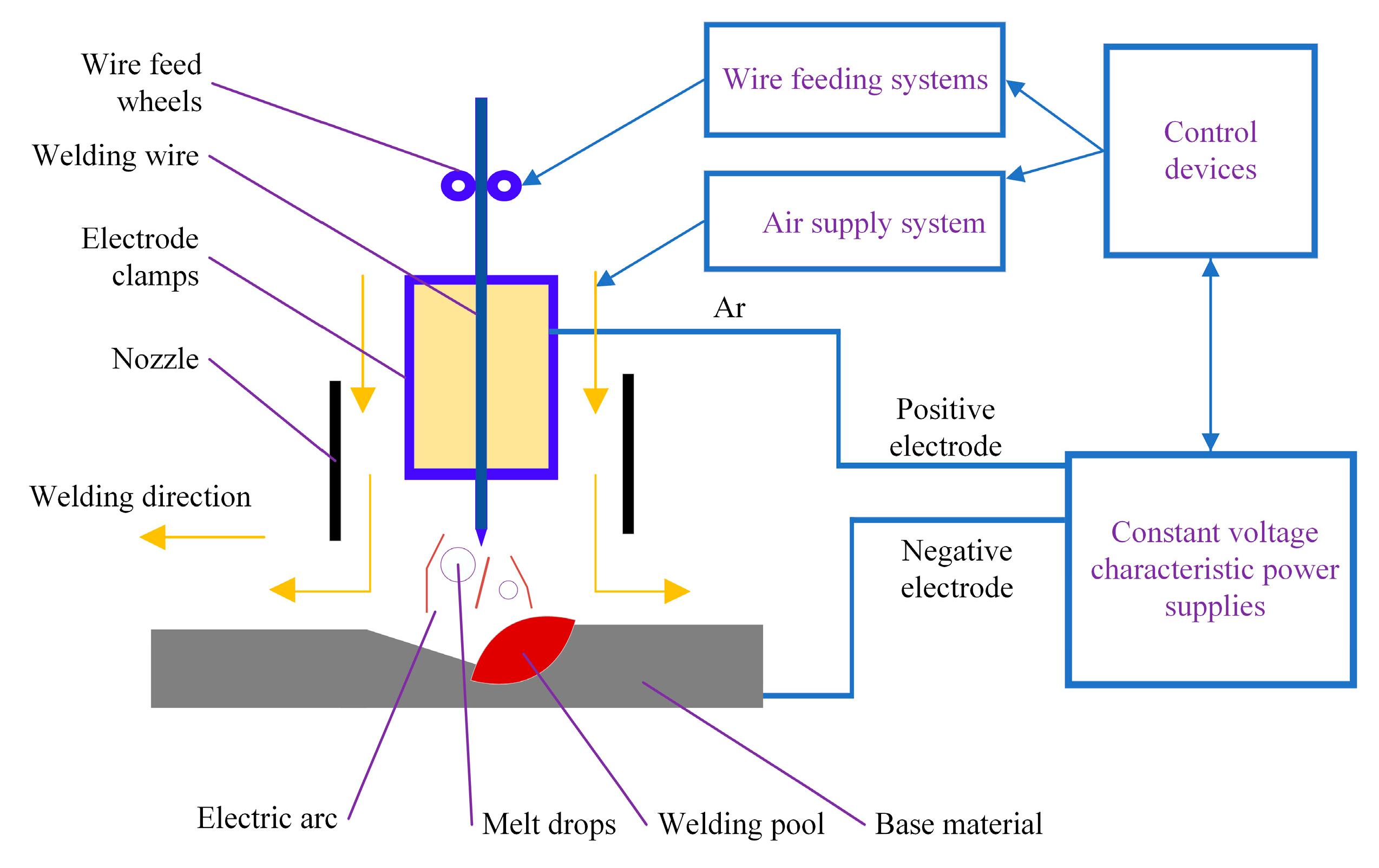
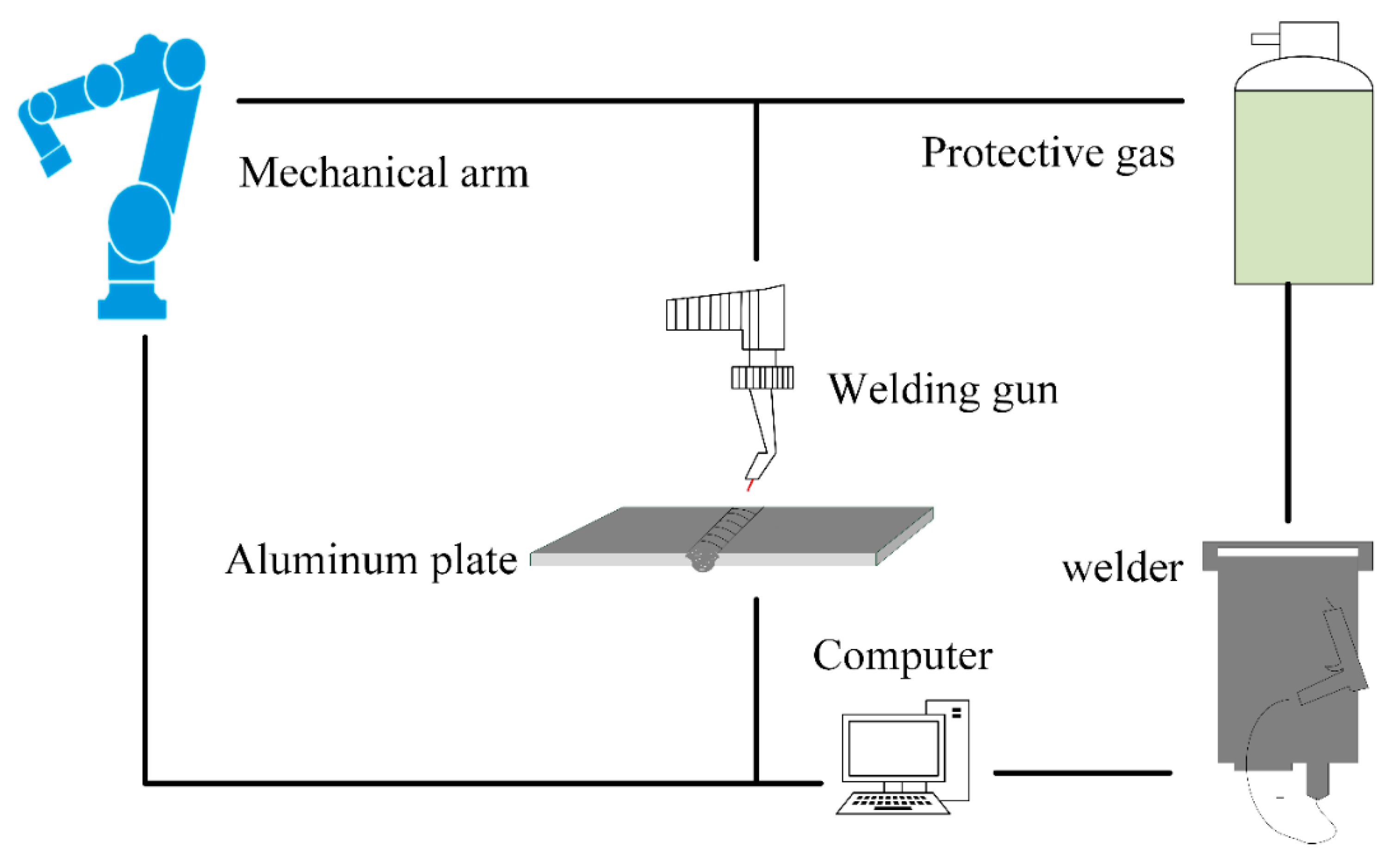
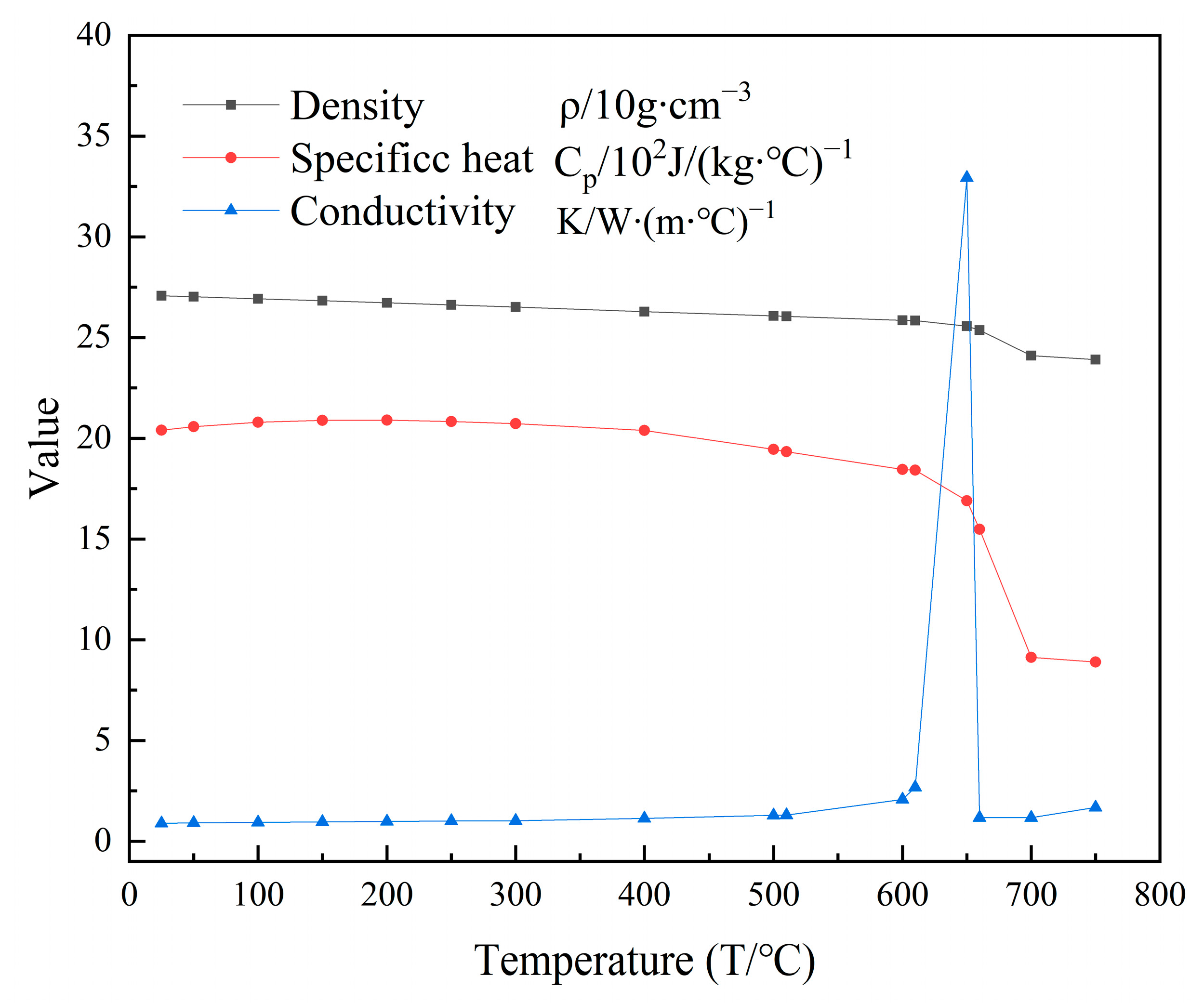


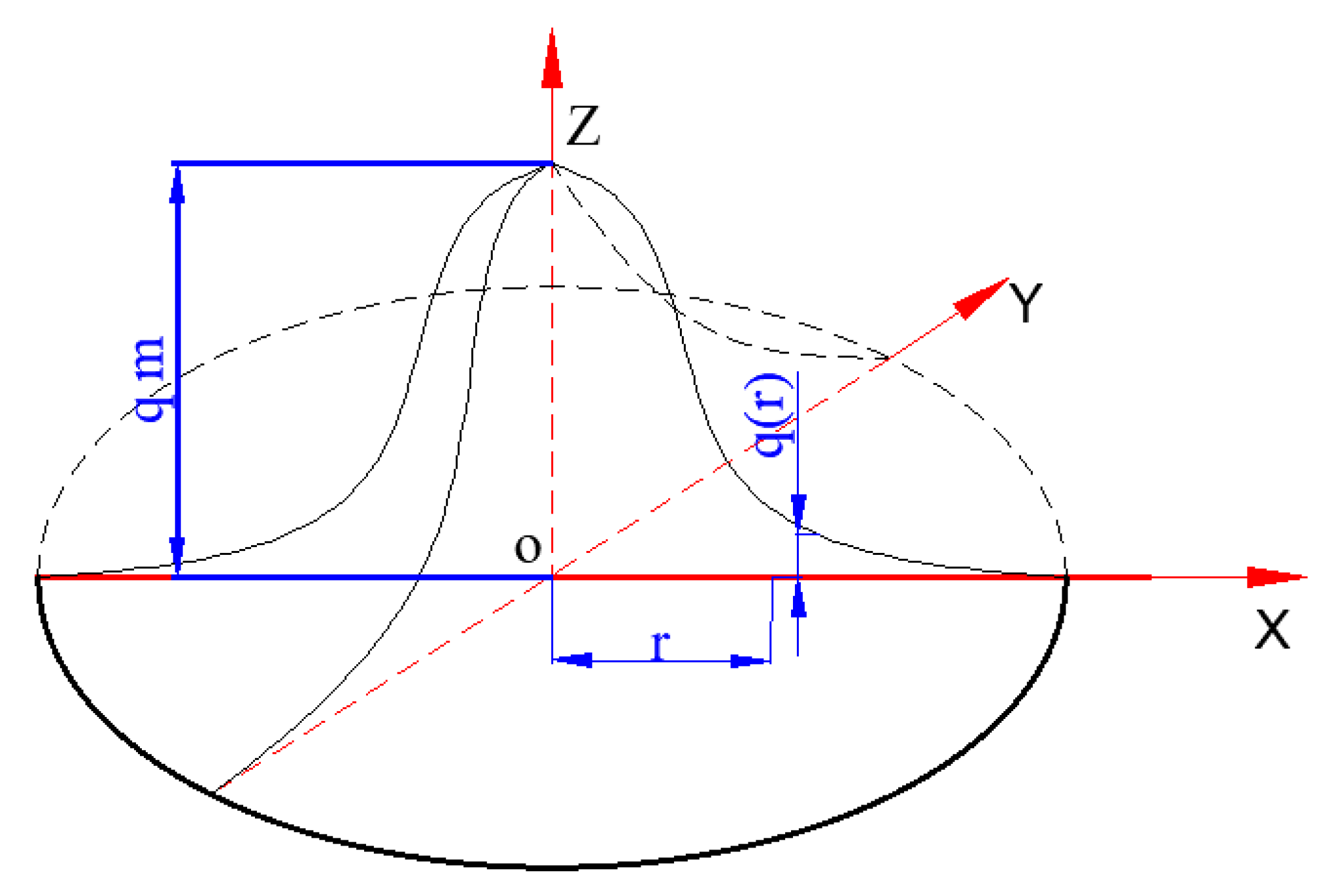

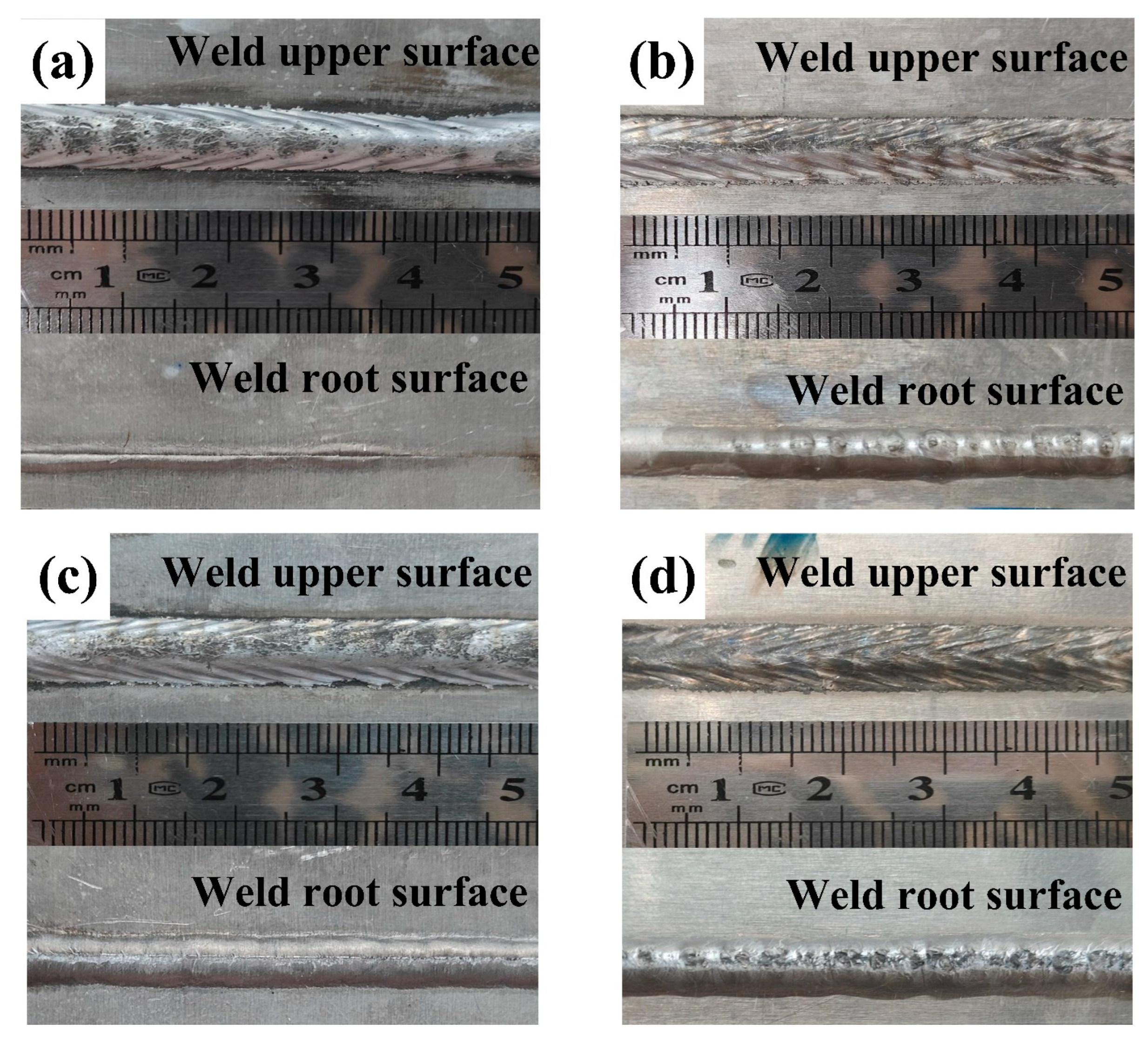
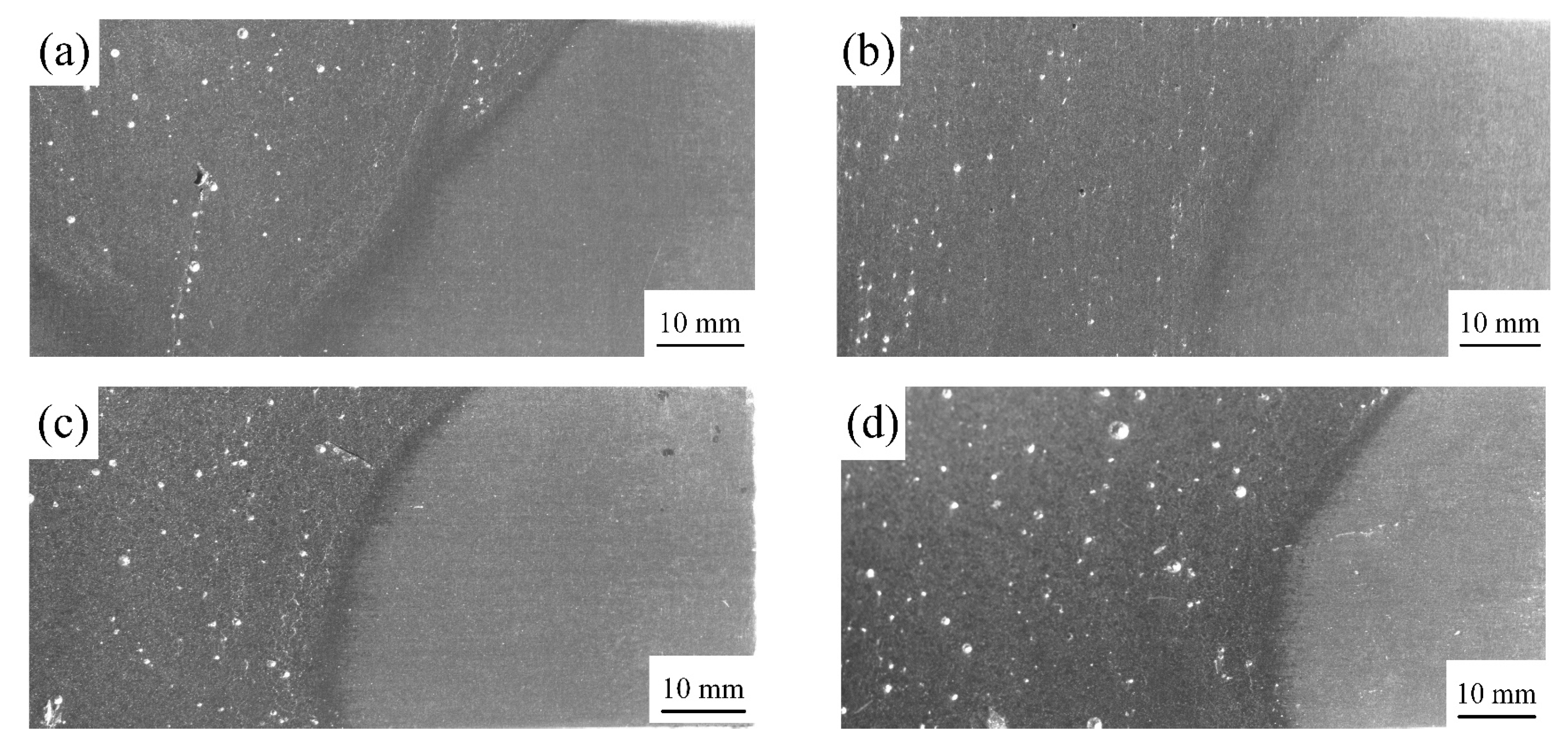
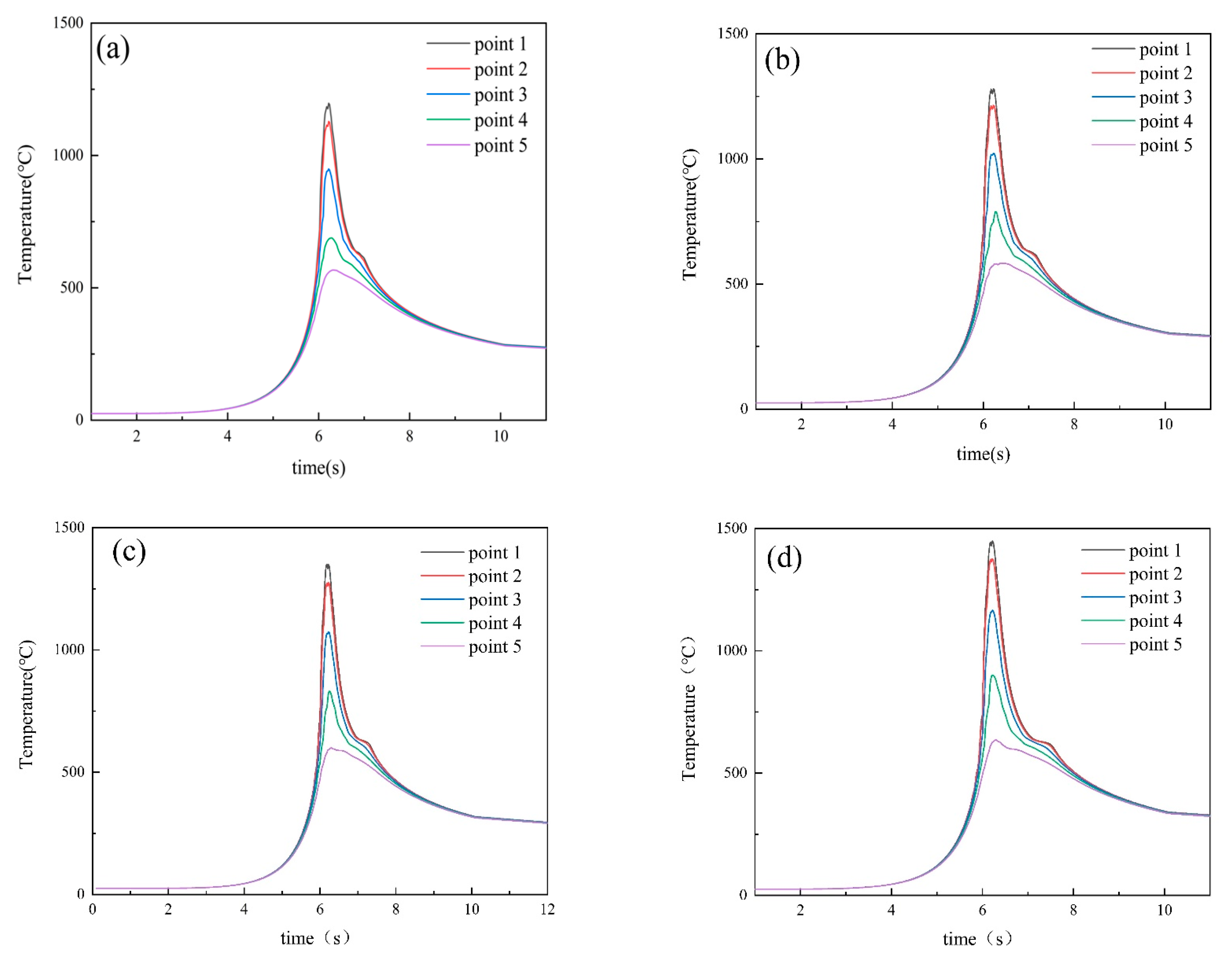
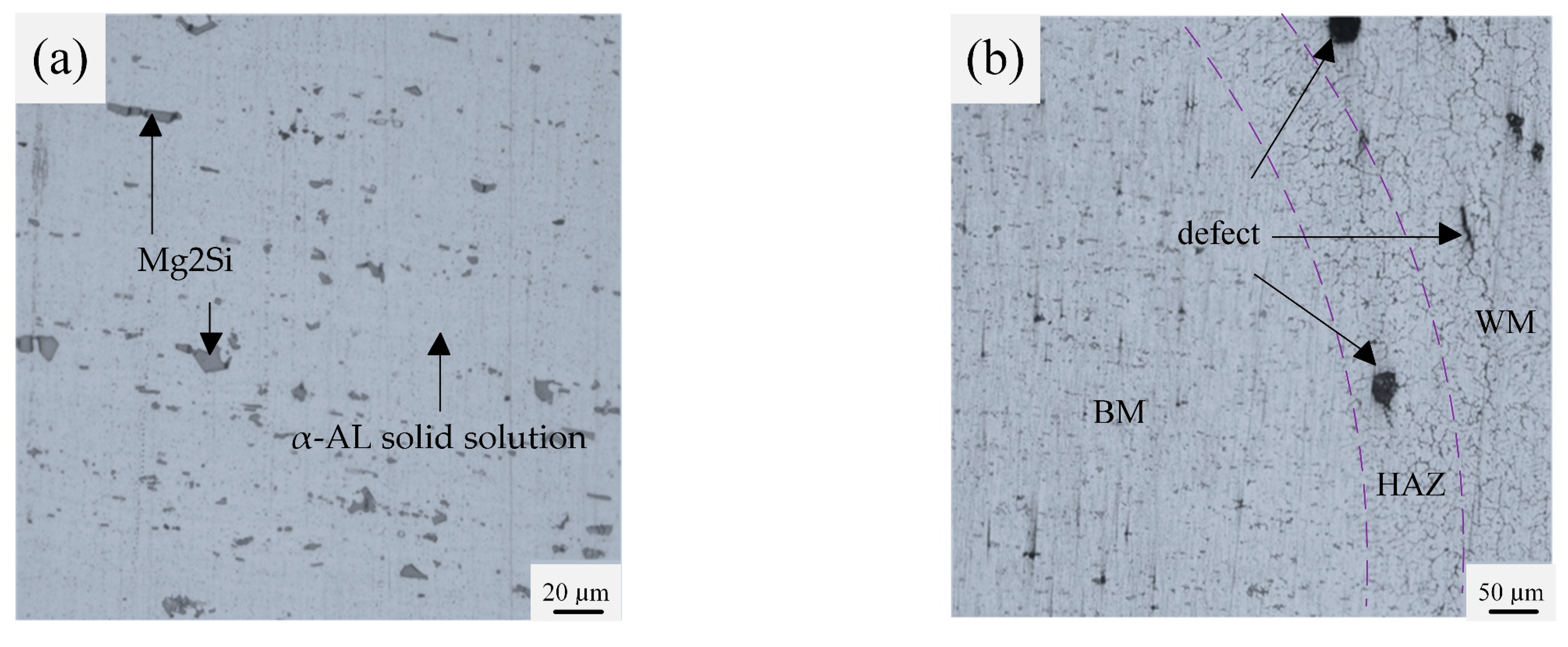


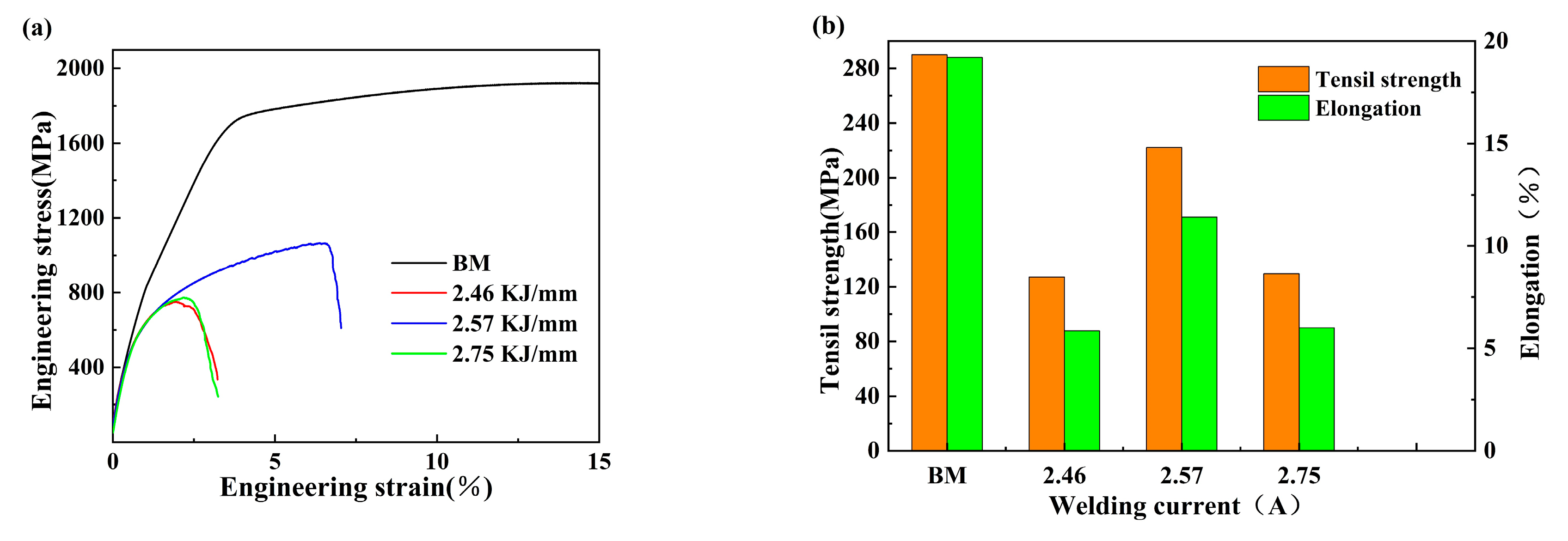

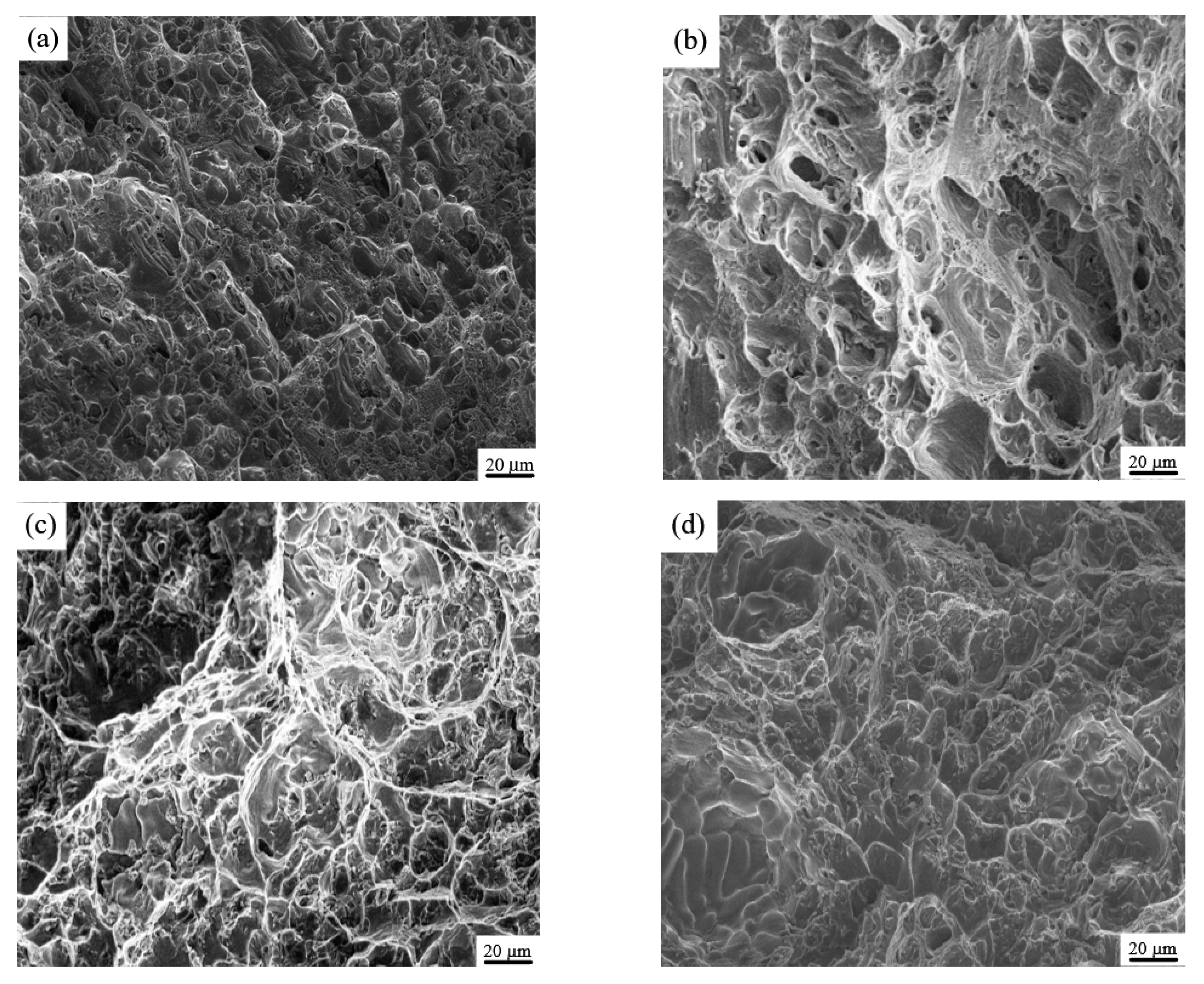

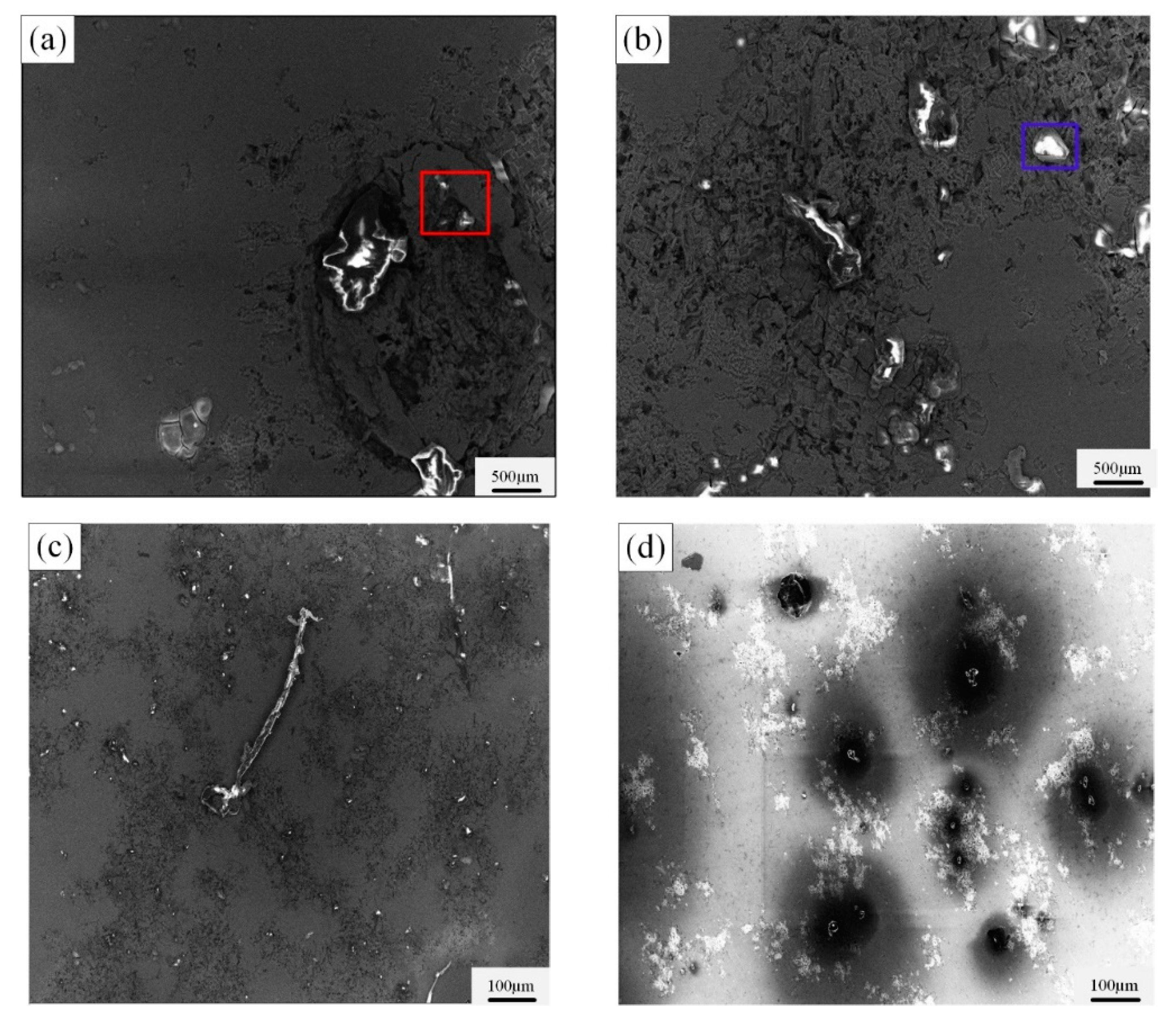
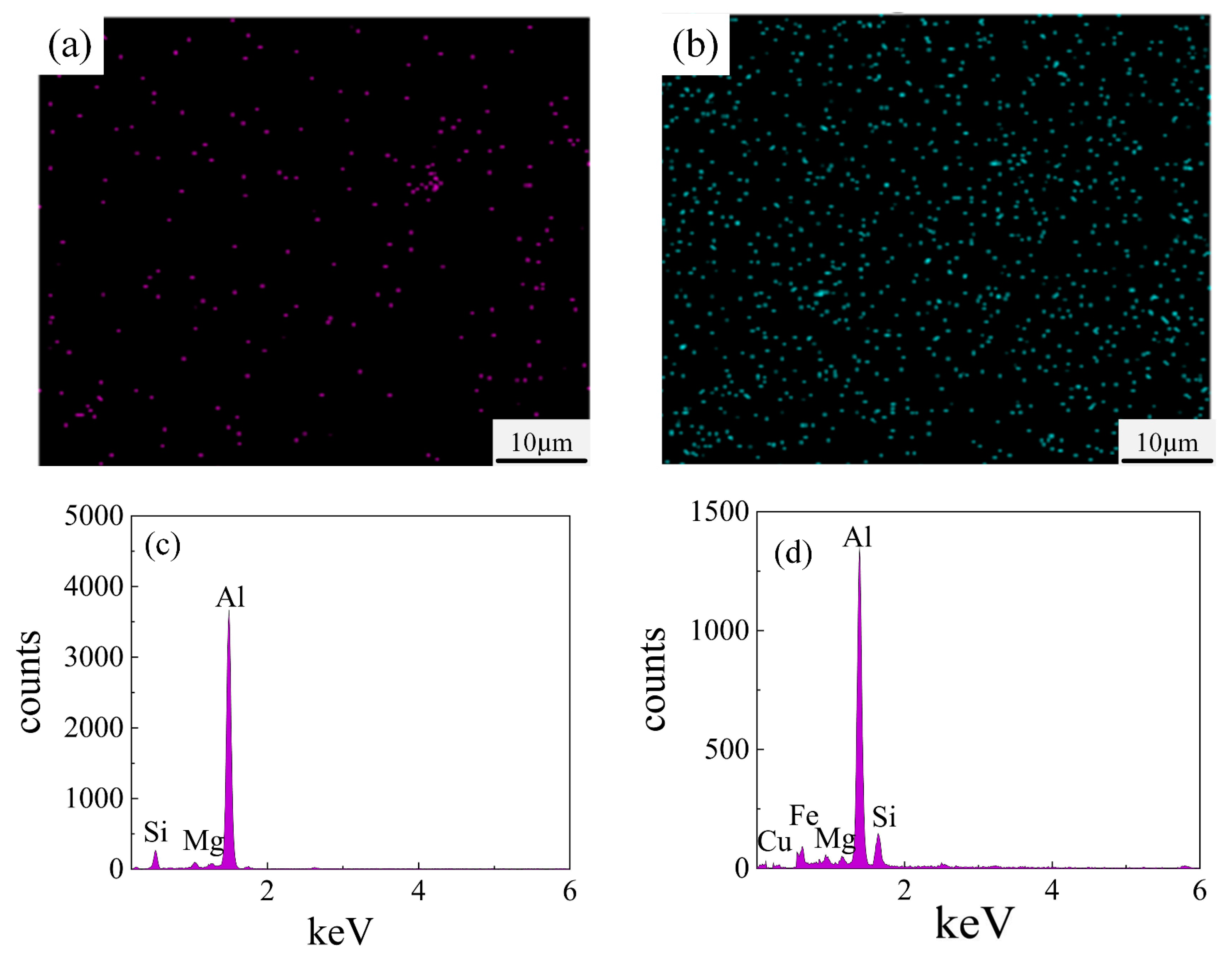
| Test | Welding Current (A) | Welding Voltage (V) | Welding Heat Input (KJ/mm) | Welding Speed (mm/s) | Argon Flow Rate (L/mm) |
|---|---|---|---|---|---|
| 1 | 150 | 19.5 | 2.34 | 10 | 20 |
| 2 | 155 | 19.9 | 2.46 | 10 | 20 |
| 3 | 160 | 20.1 | 2.57 | 10 | 20 |
| 4 | 165 | 20.9 | 2.75 | 10 | 20 |
| Materials | Si | Mn | Mg | Cu | Zn | Ti | Fe | Zr | Al |
|---|---|---|---|---|---|---|---|---|---|
| 6082-T6 | 1.00 | 0.56 | 1.00 | 0.03 | 0.166 | 0.03 | 0.50 | 0.0002 | Bal. |
| ER5356 | 0.06 | 0.82 | 5.03 | 0.01 | 0.01 | 0.09 | 0.28 | 0.10 | Bal. |
| Name | Molten Pool Morphology | Celsius Degree |
|---|---|---|
| Gaussian heat source model |  |  |
| Double ellipsoid heat source model |  | |
| Actual heat source model | 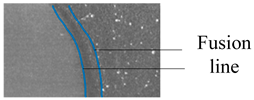 |
| Test | Welding Speed (mm/s) | Welding Current (A) | Tensile Strength (MPa) | Elongation (%) | ||
|---|---|---|---|---|---|---|
| Single Value | Average Value | Single Value | Average Value | |||
| BM-1 | 294.59 | 289.88 | 20 | 19.2 | ||
| BM-2 | 285.17 | 18.4 | ||||
| 2.46-1 | 10 | 155 | 115.84 | 127.09 | 5.7 | 5.85 |
| 2.46-2 | 10 | 155 | 138.33 | 6 | ||
| 2.57-1 | 10 | 160 | 218.34 | 222.09 | 10.8 | 11.4 |
| 2.57-2 | 10 | 160 | 225.83 | 12 | ||
| 2.75-1 | 10 | 165 | 132.92 | 129.59 | 6.4 | 6 |
| 2.75-2 | 10 | 165 | 126.25 | 5.6 | ||
| Welding Heat Input (KJ/mm) | Ecorr (V) | Icorr (A/cm2) |
|---|---|---|
| 2.46 | 0.923 | 3.40 × 10−7 |
| 2.57 | −1.169 | 6.60 × 10−6 |
| 2.75 | −0.917 | 3.37 × 10−7 |
Disclaimer/Publisher’s Note: The statements, opinions and data contained in all publications are solely those of the individual author(s) and contributor(s) and not of MDPI and/or the editor(s). MDPI and/or the editor(s) disclaim responsibility for any injury to people or property resulting from any ideas, methods, instructions or products referred to in the content. |
© 2023 by the authors. Licensee MDPI, Basel, Switzerland. This article is an open access article distributed under the terms and conditions of the Creative Commons Attribution (CC BY) license (https://creativecommons.org/licenses/by/4.0/).
Share and Cite
Cui, S.; Tian, F.; Ma, R.; Yu, Y.; Xu, L. Study on the Morphology, Microstructure, and Properties of 6082-T6 Aluminum Alloy Joints in MIG Welding. Metals 2023, 13, 1245. https://doi.org/10.3390/met13071245
Cui S, Tian F, Ma R, Yu Y, Xu L. Study on the Morphology, Microstructure, and Properties of 6082-T6 Aluminum Alloy Joints in MIG Welding. Metals. 2023; 13(7):1245. https://doi.org/10.3390/met13071245
Chicago/Turabian StyleCui, Shuwan, Fuyuan Tian, Rong Ma, Yunhe Yu, and Lei Xu. 2023. "Study on the Morphology, Microstructure, and Properties of 6082-T6 Aluminum Alloy Joints in MIG Welding" Metals 13, no. 7: 1245. https://doi.org/10.3390/met13071245
APA StyleCui, S., Tian, F., Ma, R., Yu, Y., & Xu, L. (2023). Study on the Morphology, Microstructure, and Properties of 6082-T6 Aluminum Alloy Joints in MIG Welding. Metals, 13(7), 1245. https://doi.org/10.3390/met13071245






